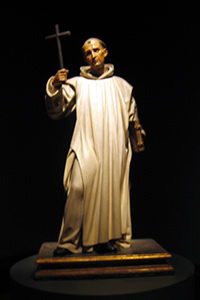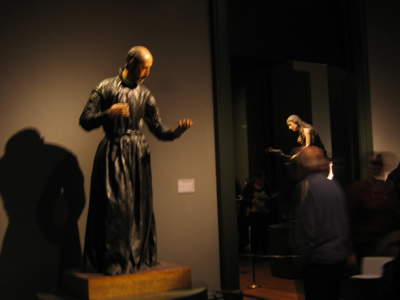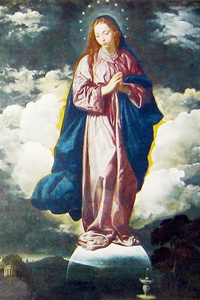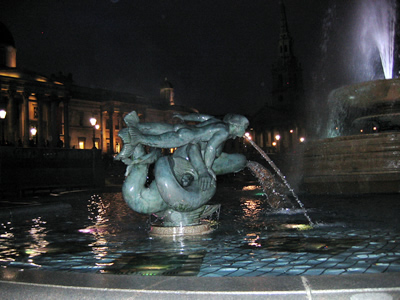« Umble Pie | Main | Sandown Show »
Friday January 22, 2010
Sacred Made Real
A birthday outing so as not to miss this National Gallery exhibition, (final day tomorrow), of Spanish painting and sculpture from 1600 - 1700.

It included Velázquez and Zurbarán masterpieces alongside life-sized carved sculptures made from painted wood - all designed for religious buildings. The sculptors went for hyper-realism, sometimes using glass eyes (as for dolls) and tears, as well as adding ivory teeth and human hair. The skill of the sculptors, I might mention, was such that the human hair was used for the eyelashes, not for the hair - they showed off their fantastic level of skill in their ability to carve the hair and amazing renditions of fabric, so fluid you cannot believe that it was made of wood. The separate skill of polychroming, was performed by specially trained painters, who often considered themselves more important than the sculptors as they "brought the pieces to life".
As was made clear in the exhibition, this form of art has been much overlooked, as the pieces generally do not leave the religious buildings in which they are housed - except to be paraded around the streets on religious high days and holidays, of course - so they are rarely seen outside Spain.
The sculpture above was Rob's favourite. Rob was very interested to glean everything he could about both the techniques of sculpting and painting the statues, to the lighting effects illustrated in the paintings; (he has recently been trying to get his video students to try different styles of shooting in order to understand how they achieve their effects and moods).

Above is a view of St Francis, who has lost whatever he was holding in his outstretched left hand - however, paintings were often made of these sculptures, and this exhibition shows the two art forms together. The contemporary painting in this case shows him holding a crowned skull, which symbolises wordly vanity - and this specific device is used in some of the other works. It led me to think of what double meanings there might be in Shakespeare's famous use of the skull in Hamlet, since that was of roughly the same period.
This view of the gallery with Mary Magdalene visible through the doorway, gives you some idea of the scale of the sculptures. I took a picture of an "interesting shadow" cast by a really wonderful exhibit which was, by contrast, really tiny; this was Saint Francis Standing in Meditation (most of them were "standing in meditation"...) which had never before left Toledo Cathedral.

I must also say: this whole exhibition was exceedingly gory and macabre, for example, John the Baptist's head with really nothing anatomically left to the imagination. That is one of the things that made the effect rather startling - lots of life-sized creations of Christian suffering. The sacred made real.
My favourite was not one of the sculptures, but Velázquez's Immaculate Conception. This is from a postcard of her - but I think the painting must have been cleaned since the pictures were taken, as it positively glowed under the excellent lighting of the exhibition.

Once outside I felt the need to picture the fountains in Trafalgar Square - the Madonna picture has some symbolism in it which I do not pretend to understand but presume it is purity and virginity: she stands on a moon, there is a kind of citadel in the background, and, in the foreground - a fountain.

Posted by Christina at 6:26 PM. Category: Art and Culture
